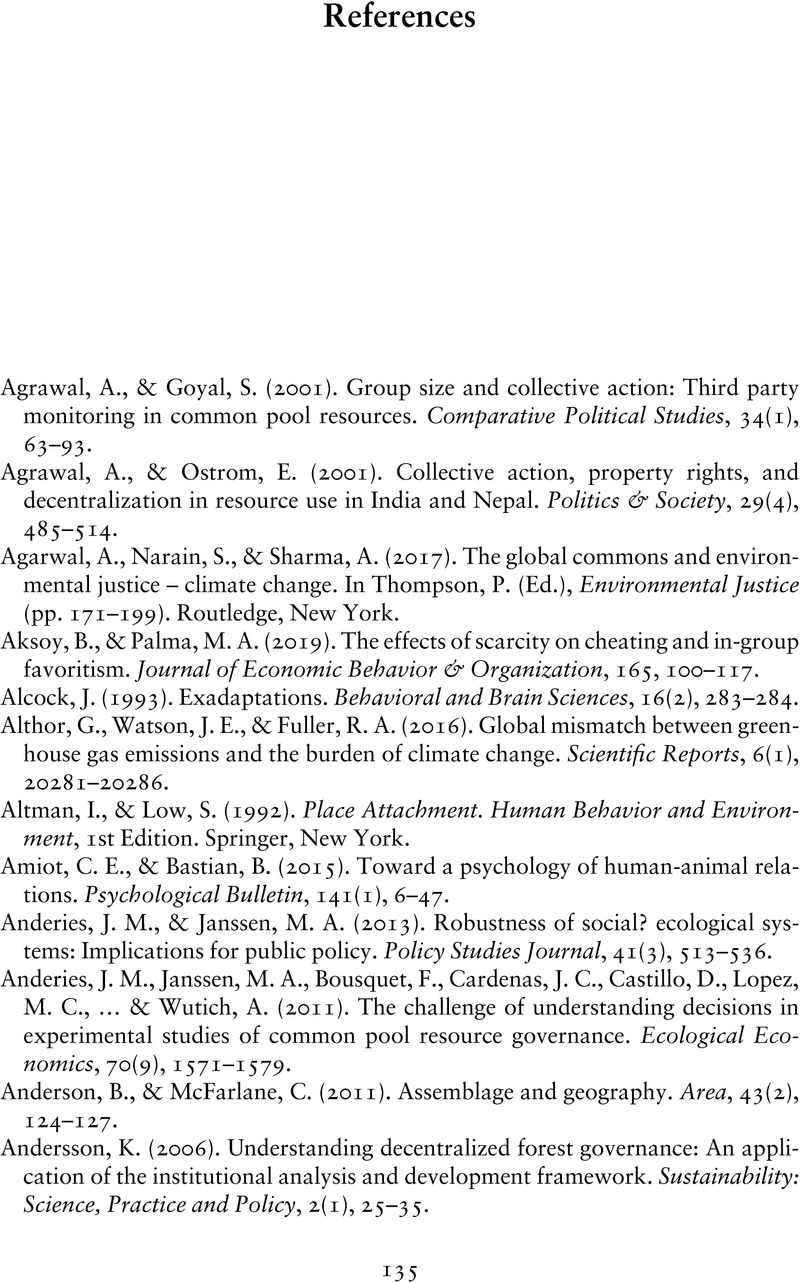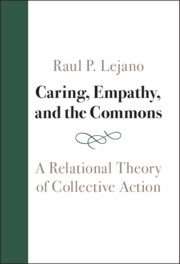Book contents
- Caring, Empathy, and the Commons
- Caring, Empathy, and the Commons
- Copyright page
- Contents
- Figures
- Tables
- Preface and Acknowledgments
- 1 Introduction
- 2 Constructing a Relational Theory of Collective Action
- 3 Further Justifications of the Relational Theory
- 4 Connectedness and Pro-Social/Pro-Environmental Behavior
- 5 Illustrations
- 6 Institutional Considerations
- 7 Prospects of Relationality
- References
- Index
- References
References
Published online by Cambridge University Press: 17 August 2023
- Caring, Empathy, and the Commons
- Caring, Empathy, and the Commons
- Copyright page
- Contents
- Figures
- Tables
- Preface and Acknowledgments
- 1 Introduction
- 2 Constructing a Relational Theory of Collective Action
- 3 Further Justifications of the Relational Theory
- 4 Connectedness and Pro-Social/Pro-Environmental Behavior
- 5 Illustrations
- 6 Institutional Considerations
- 7 Prospects of Relationality
- References
- Index
- References
Summary

- Type
- Chapter
- Information
- Caring, Empathy, and the CommonsA Relational Theory of Collective Action, pp. 135 - 162Publisher: Cambridge University PressPrint publication year: 2023



